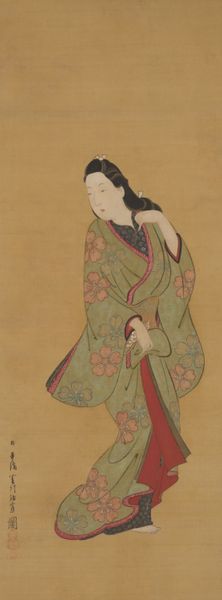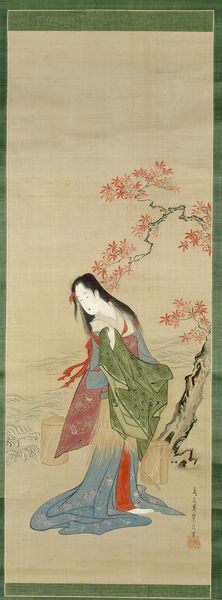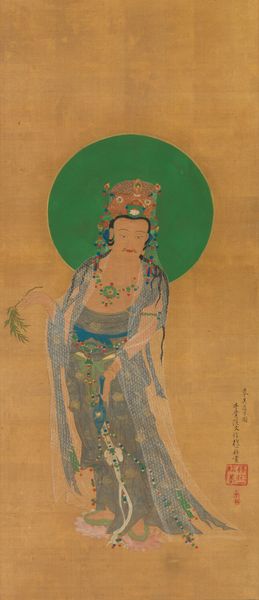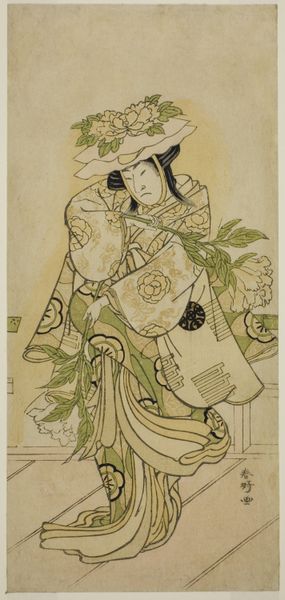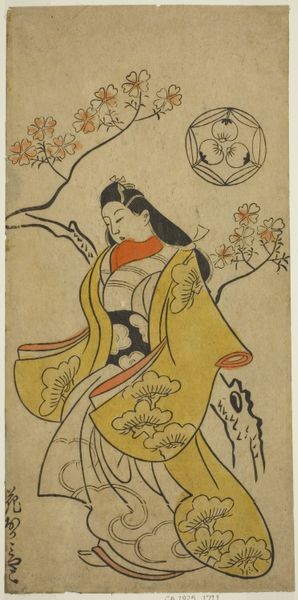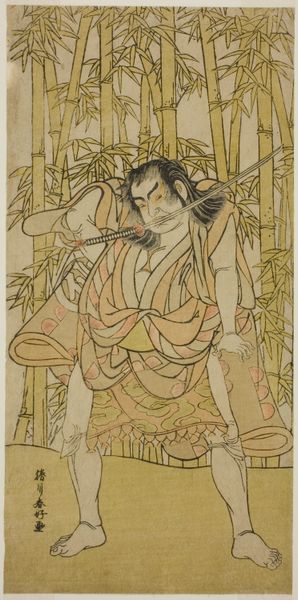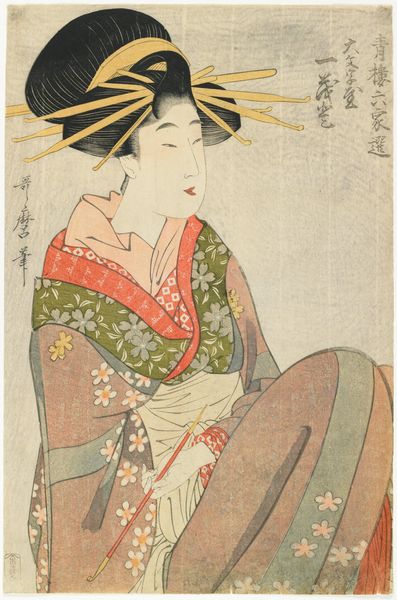
painting, watercolor
#
portrait
#
narrative-art
#
painting
#
asian-art
#
watercolor
Dimensions: 46 3/16 × 20 7/16 in. (117.32 × 51.91 cm) (image)78 3/8 × 25 1/2 in. (199.07 × 64.77 cm) (without roller)
Copyright: Public Domain
Editor: This watercolor painting, created around 1850 by Kano Kazunobu, is called "Arhat with wish-granting jewel and attendant." The Arhat's expression is intense and the scene has a kind of mystical air about it. What strikes me most is the halo-like shape behind him and the jewel he is holding. How do you interpret this work, especially concerning those two objects? Curator: Indeed. Notice how the wish-granting jewel, a potent symbol in Buddhist iconography, anchors the Arhat’s spiritual power within the earthly realm. Its placement in his hand directs our attention not just to divine granting, but also to the potential inherent in humanity to manifest their deepest aspirations, connecting with the golden, radiating mandorla behind his head. What memories do the halo and jewel evoke for you? What associations do they bring up? Editor: I think of enlightenment, divine gifts, and maybe prosperity? Curator: Exactly! The jewel embodies Buddhist compassion. And consider the attendant’s posture—offering reverence, seeking blessings. These aren't mere objects; they are vessels brimming with cultural meaning, echoed and amplified over centuries, speaking to both faith and social hierarchy. Editor: So the painting isn’t just about one enlightened being, but about a system of belief, and its potential within society? Curator: Precisely. The artist uses the conventional symbolism to evoke shared memories, a sense of cultural identity. It becomes an act of reinforcing spiritual values and societal structures. Think about it—what is the collective power of a symbol when it appears again and again through history? Editor: It’s almost like imprinting a certain kind of…hope, maybe? I never considered how much narrative could be packed into a seemingly simple image. Curator: Visual symbols form their own language. I think by seeing in this way, we better understand humanity through the ages, which is ultimately the goal of iconographic study. Editor: I agree; I’ll definitely look at art differently going forward!
Comments
minneapolisinstituteofart over 1 year ago
⋮
Kazunobu, a recently re-evaluated painter of the famous Kanō school, received prestigious commissions from Buddhist temples and was honored by the Imperial Court in 1856 for his talent with the honorary title “Hokkyō” (Bridge of the Law). His work features Western techniques, such as foreshortening, along with traditional Buddhist motifs. His last commission for the Zōjōji Temple is his great masterpiece: 500 rakan depicted in 100 paintings. The set of 16 rakan to which these two examples belong is an important and rare precursor.
Join the conversation
Join millions of artists and users on Artera today and experience the ultimate creative platform.
